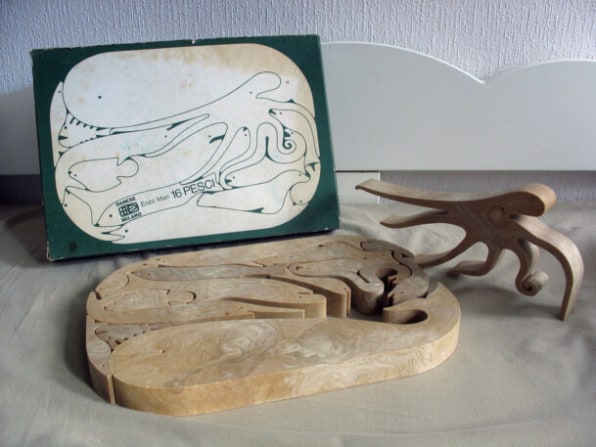
19 Oct Remembering design legend Enzo Mari, the forefather of DIY furniture
Enzo Mari, the renowned Italian industrial designer, filled our world with effective, elegant, and original everyday objects for more than six decades. He died today in Milan at the age of 88.
While he created an array of inventive pieces, such as the Sedici Animali puzzle or the minimalist Tonietta chair, what may be most memorable about Mari is the way his ideological tenacity informed his design approach.

He was born in Navara, Italy, in 1932, then under Fascist rule. He went on to study at the public Brera Academy of Fine Arts in Milan, in the mid-1950s. Mari’s Communist ideology and fervent anti-consumerism played out in his dedication to practical form with an aim to inspire the laborers who made the work, not just conscript them into drudgery. He designed a range of furniture and household objects, such as bowls, ashtrays, letter openers, and vases.

Mari also took inspiration from the Arts and Crafts movement, itself a reaction to the industrial revolution and industrialized labor. This philosophy spanned his career, but we see it play out in the elegant simplicity of key works such as the Elisa armchair, the Box chair, and the 1974 self-assembly Sedia chair, made out of simple and inexpensive pine wood the users could build themselves. His popularization of these Autoprogettazione, or do-it-yourself designs, could be seen as a clear forefather to open-source designs and the DIY, inexpensive furniture we see today.

He had a keen attention to detail and the ability to strip down everyday objects—whether illustrations or trash bins—to their most fundamental parts. This creativity is evident in the understated practicality of this stackable chair and the easy grace of his Formosa calendar. But according to Alice Rawsthorn, design critic and author of Design as an Attitude, his artistic skill isn’t the only quality that stood out. “His greatest contribution to design culture is the zest with which he pursued his political oncerns in his work: from anti-consumerism and workers’ rights to environmentalism,” Rawsthorn says.

That commitment may be his greatest legacy, particularly as today’s designers tackle an ever-growing list of systemic problems, from climate change to economic inequality. According to Rawsthorn, there was “a surge of interest in his work in the years before his death, particularly among young designers and design activists, who share his commitment to using design to address urgent social, political, and ecological challenges.”
An exhibit celebrating Mari’s work is currently on view at the Triennale museum in Milan. Read more about it here.
Source: Fast Company




Sorry, the comment form is closed at this time.